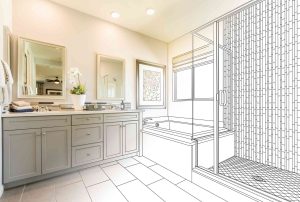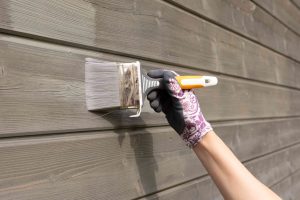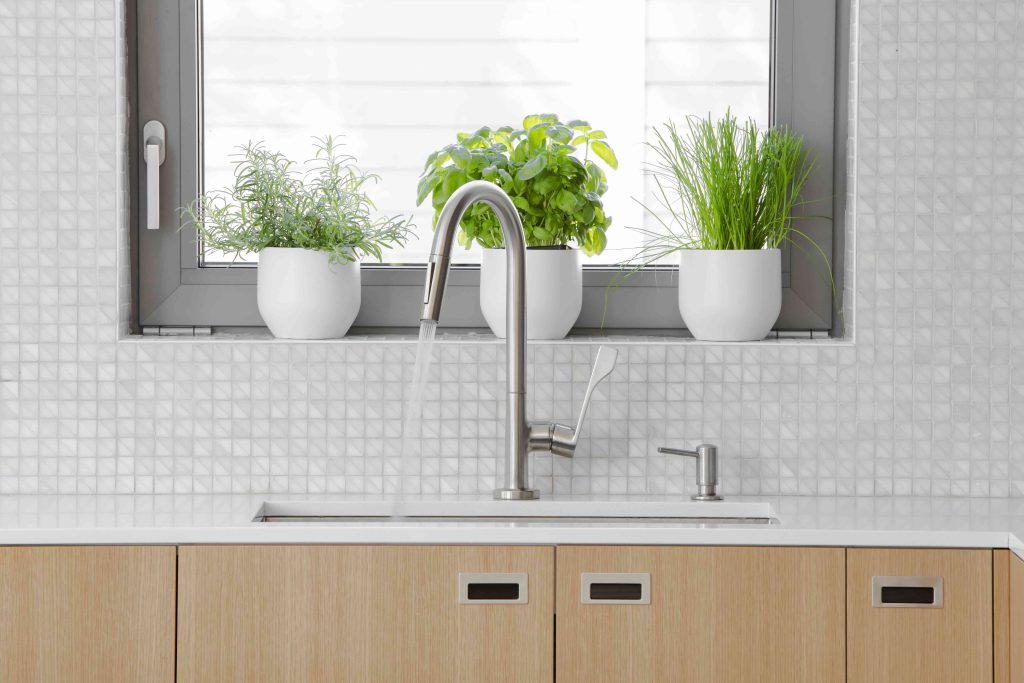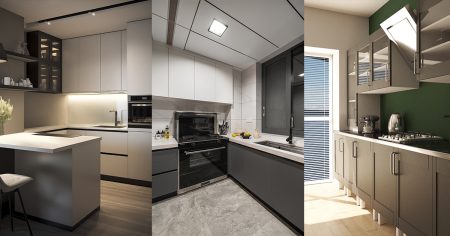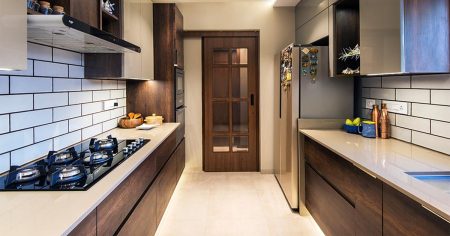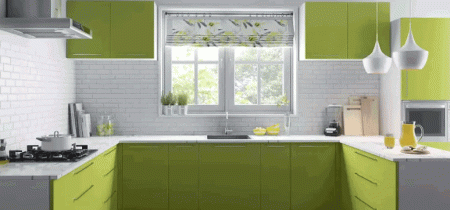Kitchen faucet installation is a fast, affordable way to freshen up your kitchen. You can install most kitchen faucets for around $100 and in less than an hour. When installing a new kitchen faucet, it’s also a good time to evaluate the plumbing under the sink for any repairs or replacements.
Before You Begin
Single-handle kitchen faucet installation works best on sinks that have one hole on the back rim. All of the water lines feed through that hole, for a smooth look and easy cleaning.
However, when the sink has three holes on the rim, a single-handle faucet can still be used. An optional deck plate covers the two side holes, leaving the center hole available for the faucet.
What You’ll Need
Equipment / Tools
- Basin wrench
- Pliers
- Flashlight
Materials
- Single-handle kitchen faucet
- Deck plate (for three-hole sinks)
- PFTE or Teflon tape
Instructions
How to Install a Kitchen Faucet
-
Shut Off the Water Supply
Turn the hot and cold valve handles clockwise to shut off the water supply to the existing kitchen faucet. The valve handles are located inside the sink base cabinet.
-
Remove the Existing Kitchen Faucet
Remove the existing kitchen faucet by first unscrewing the flexible water supply lines from the supply valves. Unscrew the faucet locking nut that secures the threaded lower shank of the faucet body against the bottom of the sink. From above, pull the entire kitchen faucet assembly with attached lines out of the sink.
-
Prepare the Sink Rim
Clean all soap scum and other debris from the sink rim around the installation holes. The faucet body must rest solidly and squarely on the rim.
-
Add the Deck Plate (Optional)
For three-hole sinks, place the deck plate over the holes. Fit the silicone or rubber gasket into the top of the deck plate.
-
Run the Supply Lines Into the Sink
Insert the faucet’s flexible water supply lines into the center hole. The supply lines are often pre-attached to the faucet. Bundle the lines with your free hand to guide them into the hole.
-
Attach the Faucet Locking Nut
From below, screw the large faucet locking nut onto the threaded shank. After hand-tightening the nut, further tighten the nut with the basin wrench.
-
Attach the Counterweight (Optional)
If the kitchen faucet has a pull-down sprayer, attach the counterweight 3 to 4 inches above the lowest part of the sprayer hose’s draped loop. Some sprayer hoses indicate the counterweight location with a colored mark.
-
Apply Pipe Tape to the Valves
Wrap pipe tape (also known as PFTE or Teflon tape) around the male threads of the shut-off valves. Wind the tape clockwise.
-
Connect the Water Supply Lines
Attach the faucet’s water supply lines to the house’s hot and cold shut-off valves. Screw on by hand at first, then finish by tightening with pliers.
-
Test the Faucet
Turn the water valves counter-clockwise to open them. Turn slowly and use the flashlight to observe the threaded connections for leaks. Turn on the faucet and check around the faucet base or deck plate for leaks.
Tips for Kitchen Faucet Installation
- Most leaks will develop immediately if the faucet was installed incorrectly or if the product is defective.
- Do not attach the sprayer hose counterweight to the bottom of the loop. It must be located a few inches up.
- Double-check to make sure that you’re attaching the faucet’s hot and cold supply lines to the correct hot and cold valves.
- Newer 3/8-inch water lines will not fit on 1/2-inch water supply valves. Some kitchen faucet kits supply adapters or they can be purchased at most home centers.
When to Call a Professional
Kitchen faucet installation should be within the skill set of most homeowners. Unique kitchen faucets like wall-mounted pot fillers should be installed by an experienced plumber. Kitchen faucets that tap into tankless water heaters also are candidates for professional installation.
-
Do you need a plumber to install a kitchen faucet?
A plumber is typically not needed to install a kitchen faucet. Homeowners with no plumbing experience can complete this simple project. Accessing the sink from below can be difficult. So, homeowners who find this difficult may choose to find a plumber for the job.
-
How much should it cost to install a kitchen faucet?
It costs $75 to $125 to install a kitchen faucet by yourself. The cost of installing a kitchen faucet is mostly the cost of the faucet itself. Few, if any, additional materials are required.
-
Do you need caulk to install a kitchen faucet?
Caulk is usually not needed to install a kitchen faucet. As long as the sink rim is clean and in good shape, it should seal seamlessly to the kitchen faucet, as long as the included gaskets are used.
Read the full article here



